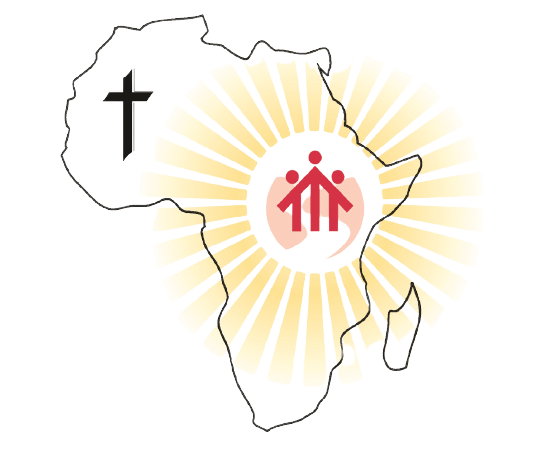Why Males Need Rites of Passage
Some transitions in life are so radical that the old form of life simply cannot continue into the new form; the old form must give way and the new form be embraced.

Why Males Need Rites of Passage - Jason Craig
Therefore, if anyone is in Christ, he is a new creation; the old has passed away, behold, the new has come. (2 Corinthians 5:17)
Some transitions in life are so radical that the old form of life simply cannot continue into the new form; the old form must give way and the new form be embraced.
A man cannot be both married and unmarried, ordained and lay, or dead and alive.
This transition, when one state of life “dies” and another is “born,” is the more universal understanding of a rite of passage: the passing of one state that allows for the embrace of a new one.
The French anthropologist Arnold Van Gennep (1873–1957) first coined this terminology in his book Rites of Passage. His work explains how cultures and communities ritualize and guide the transitions in life from infancy to old age. “For every one of these events [rites of passage] there are ceremonies whose essential purpose is to enable the individual to pass from one defined position to another which is equally well defined.” Van Gennep identifies three distinct parts that are present in varying degrees in any rite of passage: separation, initiation, and incorporation.
Separation: the leaving behind or “death” of the previous state in life, when a new way of living and understanding oneself requires that the old way and understanding be put away.
Initiation: usually the actual rite or ceremony. This process is intentionally guided by those who have already “walked the path.”
Incorporation: the final stage of being brought into the community and receiving instruction in the new form of life.
Van Gennep identified and described this as a truly human need and practice. In other words, initiation is a human need. It helps us to understand and mark transitions, as well as embrace and live our identities within a living community.
This pattern of separation, initiation, and incorporation is discernible in other realms as well, most notably in the Church, since the new life in Christ is, as St. Paul said, incompatible with the “old man.”
The pattern is noticeable especially in the sacraments of initiation:
Baptism, Confirmation, and Holy Eucharist.
In Baptism, we are “[buried] into Christ’s death” so as to be “reborn as sons of God” — separation.
Confirmation “confirms” and “strengthens” the baptismal graces with the oil that is “a sign of consecration,” the full initiation into the new life in Christ — initiation.
The Holy Eucharist fully incorporates the Christian in the Body of Christ, the Church (CCC 1396) — incorporation.
When most people think of a rite of passage, they chiefly think of boys becoming men.
The reason male rites of passage are so striking in our imaginations is that they are more orchestrated or public than those of females. We might think of an African tribe sending a boy out to kill a lion or Australian Aborigines circumcising their adolescent boys in an elaborate and public ceremony. Something within masculinity has a need to be fully equipped and challenged, or else it has a tendency toward a dangerous distortion.
Masculine initiation is also a constant thread in ancient and classical literature and culture.
Achilles, for example, was given over by his father to Chiron, a centaur, to be initiated into manhood.
Jack and the Beanstalk was originally a story of a boy separating from his mother, going through the “battle” with the beanstalk and the giant, and then actually liberating his father so he could become a man like him and reclaim his inheritance. (The giant’s castle actually belonged to Jack’s father.)
Whether it’s Telemachus in The Odyssey or Daniel in The Karate Kid, we can see that boys need to be guided by mentors and fathers into mature and capable masculinity.
Women also go through rites of passage to womanhood, but these rites are deeply rooted in their physical and psychological makeup. In other words, they occur naturally and are naturally powerful.
I was once in a room with my wife and two midwives as they discussed the experience of birth — an event that marks the ultimate physical achievement of womanhood. They were all mothers, had endured childbirth, and each was certain that she had “achieved” motherhood in the experience.
As they were talking about the powerful experience of birth, one midwife described just how amazing it is to look back once you are on the other side of it. She beamed, “It’s life-changing.”
She looked at me, paused, and said, “I’m sure men have things like that too, right?”
But the answer is no. Men don’t have things like that. At least, they don’t have them naturally.
Paternity — the heart of authentic masculinity — is something a man must choose and embrace. Rites of passage are designed to help make a man of him so that he will choose it.
Male maturity ends in fatherhood, in passing on life to the next generation.
Female maturity, similarly, is rooted in motherhood.
For both men and women, of course, the expression of being a mother or father can be in non-biological ways — clergy and religious are obvious examples.
But for women, the physical and even painful signs of the feminine connection to motherhood come more naturally, since (even in an age of contraception) women experience these signs in their bodies, beginning with menstruation.
Men, on the other hand, can coast along in immaturity if they have no “mirroring” experience offered by mature men, fathers and brothers who have trekked the difficult path of masculinity before them.
“What a woman receives from her experience of her physical female nature, a man must receive from his culture, because he will not receive it simply by living out the logic of his male body,” explains Dr Leon J Podles.
Males need tangible rites of passage — in other words, concrete steps of separation, initiation, and incorporation — in order to become men.
What do Van Gennep’s distinct stages look like when applied to masculinity specifically?
First, the boy needs to be separated from boyhood.
This means especially a real separation from the realm and control of his mother, who is the primary authority over his infancy and childhood.
Through this separation, a boy “puts away” childhood intentionally and knowingly.
Second, a boy needs initiation. In this phase, a boy must receive mentoring or guidance in the ways of men, sometimes “proving” himself through physical challenges.
The third phase, incorporation, happens when members of the community, especially the men, accept and recognize his manhood and continue his maturation through mentoring and guidance.
It is important to frame a rite of passage in its full context — the exit from boyhood into a brotherhood of men — and not just in its sensational and ceremonial aspect (i.e. the physical and extravagant ceremonies of ancient cultures that really only show part of the whole process, the initiation, omitting the separation and subsequent incorporation).
Traditional rites of passage for boys occurred during adolescence, commonly understood as beginning around age twelve-thirteen. This makes sense biologically, since this is the age when a boy’s brain actually stops working like a child’s.
The Catholic human geneticist Gerard M. Verschuuren describes this physiological process:
“Because the brain goes through dramatic changes, adolescents have a way of behaving and thinking that is rather different from that of children. … Adolescents’ thinking is less bound to concrete events than that of children; they can contemplate possibilities outside the realm of what currently exists.” By seeing the whole picture of a rite of passage — separation, initiation, incorporation — we can more fully understand what is missing today and what we can do about it. If we focus too much on the sensational, physical, and experiential, we will likely create silly or harmful caricatures of a real human need.
Young men are people and not machines, so we need to understand the transition into manhood as more of a birth than a programmatic process.
A boy’s education and initiation into manhood are not just a matter of giving the right facts or information. It must be an experience and introduction into a living and breathing world — a culture.
Allan Bloom, a great American philosopher and classicist, rightly connected adolescence with the true birth of man and his general education, since humans enter a unique period of formation during puberty that animals do not:
In all species other than man, when an animal reaches puberty, it is all that it ever will be.
Only in man is puberty just the beginning.
The greater and more interesting part of his learning, moral and intellectual, come afterward.
There is a long road to human adulthood, the condition in which human beings are able to govern themselves and become true mothers and fathers.
When animals reach puberty, the transition from birth to adulthood is basically over, and they can get on with life — eating and mating.
For human beings, adolescence is the beginning of adult formation, when we’re meant to learn to go beyond merely eating and mating. It is because adolescence is a “beginning” that it is also foundational to our self-understanding, and why wounds and incompleteness in this age carry into older ages.
Sadly, for boys today, adolescence may be the end of boyhood, but it does not signal a smooth transition into mature character and belonging. It is usually a time where sin is introduced, new family tensions arise, and a frantic sequence of identities are “tried on” until something sticks or seems to work.
According to popular “culture” and the media, the things that ‘grown’ males start doing are basically debaucheries: adult beverages, adult movies, adult clubs, “adult” language.
Society communicates to boys that to be a man, an adult, is to have the license to sin!
Some men find ways to do this without hurting others, but the really manly men are the ones who are able to thrive on and display their sins without consequence — think of rappers, womanizing tycoons, or gangsters. When we tell boys to “grow up” and “act responsibly,” they picture work, worry, and dysfunctional relationships.
If this is all there is to mature adulthood, why bother? Why not avoid responsibility and enjoy a carefree life of sin? In other words, why not remain in ongoing adolescence!?
Young men are debilitated by the modern world’s inability or unwillingness to affirm or define true masculinity, but the mirroring problem is seen in the isolated, lonely, and grinding lives of your average man. Older generations do not have the outlets and means to pass on their wisdom and life, and younger generations lack the means and openness to receive it.
This is why framing our issues as issues of initiation (in its fullest sense), keeps us from reducing the “man-crisis” and its answer to codes of conduct and “3 easy steps to be more manly.”
Genuine human needs are simply not that easily answered. Our issues are in our very idea of tradition, culture, identity, and belonging. In other words, men are suffering from immaturity and insecurity because of the very anthems of the modern era. Turning the tide is no easy “life hack,” but a recovery of belonging and tradition that is at the heart of our faith, which is why, it seems, the Church and her great patrimony is uniquely suited to help overcome this tidal crisis.
- Adapted from chapter 2 of Leaving Boyhood Behind. And for more see Jason Craig’s Leaving Boyhood Behind (OSV, 2019)


















